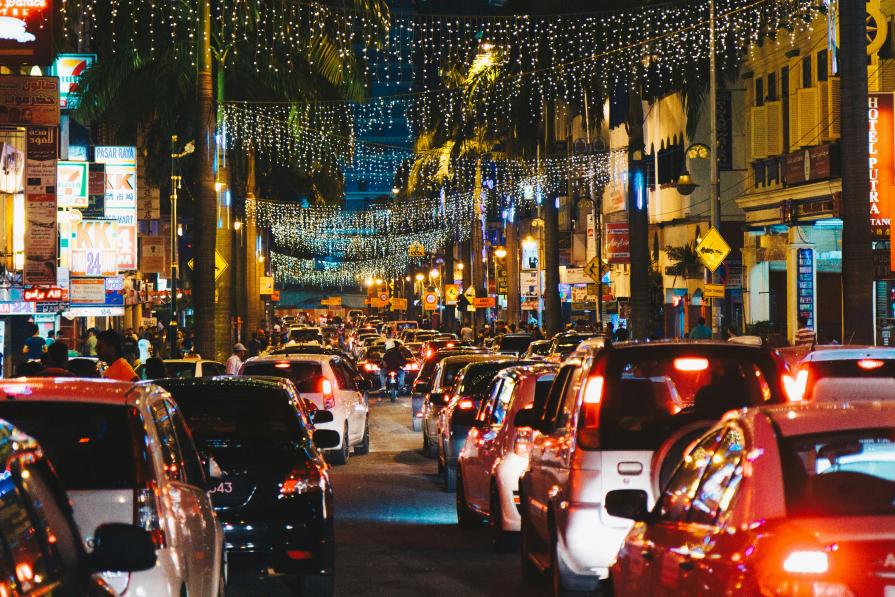Have you ever wondered how long it takes you to get through traffic and how much time you could save by moving to a less populated city? Today, a car is no longer a luxury, the number of personal cars is growing by leaps and bounds, and with them the number of traffic jams is increasing, since the city authorities do not always have time to adapt the road infrastructure to the growing needs. The problem is that even with sufficient resources, it is not possible to expand road networks and build complex transport interchanges indefinitely.
For the eighth year in a row, the Dutch company TomTom has conducted global surveys of traffic jams in different parts of the world. Their report, which includes traffic statistics from 403 cities from 56 countries on 6 continents, provides a valuable resource for drivers, urban planners, and car manufacturers around the world. This study helps to understand how the level of traffic congestion affects the lives of cities and their residents, what solutions can be found to optimize urban mobility.
The ranking of cities by the level of traffic congestion is determined based on the time that drivers spend in traffic jams per year. The higher the position of the city in the list, the more time motorists spend in traffic jams.
It is interesting to note that cities from the richest and most developed countries are often not in the top in terms of congestion. This is due to the fact that there has been a decline in motorization in Europe since the late 70s: governments began to limit the number of cars in cities, stimulating the development of pedestrian zones and public transport. In addition, the conflict with Arab countries led to an increase in gasoline prices, which also played a role.
Today, the problem of traffic congestion mainly affects countries in Asia and Latin America: four of the ten most "stagnant" cities are in Latin America, and five are in Asia. This is due to rapid urbanization, urban population growth, and chaotic development amid the increasing availability of cars in these regions.
In this article, we will tell you about five cities where the traffic situation is particularly critical, where drivers spend a significant part of their time in traffic jams every year.
Moscow = 5th place
Moscow ranks fifth in our ranking of cities with the highest level of traffic congestion. In 2018, the level of traffic jams in the Russian capital reached 56%, which means that on average the travel time increases by almost 1.5 times compared to the situation with free traffic. This, in turn, means that Muscovites spend more than 9 days on traffic jams every year, which is the highest rate in Europe.

As for St. Petersburg, the situation is a little better — the city took 12th place in the traffic jam index for 2018. Nevertheless, even here motorists have to spend 1.5 times more time on the road than it would be possible in the absence of traffic jams.
Delhi = 4th place
New Delhi, the official capital of India, although one of the largest and most populous capitals in the world, occupies a relatively small area of only 42 square kilometers, while the population density reaches almost 11,500 people per square kilometer.

Traffic congestion in New Delhi is a common occurrence, despite the fact that the car market has shrunk over the past year and a half, with more than 270 car dealerships closed. However, the number of cars in the city is still excessively high. It is believed that if New Delhi's roads were free of congestion, drivers could reduce their travel time by 58%.
Lima = 3rd place
Lima, the capital of Peru and one of the largest cities in Latin America, has been increasingly plagued by congestion in recent years. Violation of traffic rules by drivers, ignoring pedestrian crossings and lack of respect for the rules are common and commonplace in this country, which increases the number of road accidents and exacerbates the problem of traffic jams.

The situation in Lima is complicated by the extremely unsatisfactory state of public transport, which is why many residents are forced to spend a lot of time in traffic jams. Almost three-quarters of the city's 10 million residents use public transport, but they are often forced to travel in crowded, noisy and smoking minivans, whose drivers prefer to compete in speed, thereby increasing the rate of accidents and deaths on the roads.
These factors make getting around the city a challenging and risky endeavor, causing significant problems for both drivers and commuters in Lima.
Bogotá = 2nd place
Colombia's capital has experienced a significant automobile boom in recent years, resulting in the city's residents being forced to spend 63% more time on the road compared to previous decades. However, the problem of traffic congestion in Bogotá goes beyond just lost time: motorization has led to an increase in air pollution and a high death rate due to road accidents.
Over the past seven years, the number of private cars in Bogotá has increased by 76%, which has coincided with a sharp increase in the incidence of respiratory diseases. Statistics show that these diseases have become the leading cause of child mortality in the city. This underscores the importance of taking action to reduce pollution and improve transport infrastructure to ensure the safety and health of citizens.
Mumbai = 1st place
Mumbai, India's largest city and financial capital, ranks first in the ranking of cities with the biggest traffic jams. In this city, the travel time by car is 65% longer than in free-traffic conditions. Studies show that the period from 2 to 5 a.m. is the most suitable time to drive, but from early morning the traffic density begins to gradually increase.
The worst traffic conditions are seen on Saturday evenings, when travel time by car almost doubles. On August 21, 2018, the situation in Mumbai reached a critical level, with traffic congestion rising to 111%.
The situation is unlikely to improve in the coming years. In India, the world's second most populous country, the number of cars has increased more than 1.5 times in the last decade, and many families own two or three cars. Given this increase in the number of vehicles, controlling the problem of congestion is becoming increasingly difficult.










